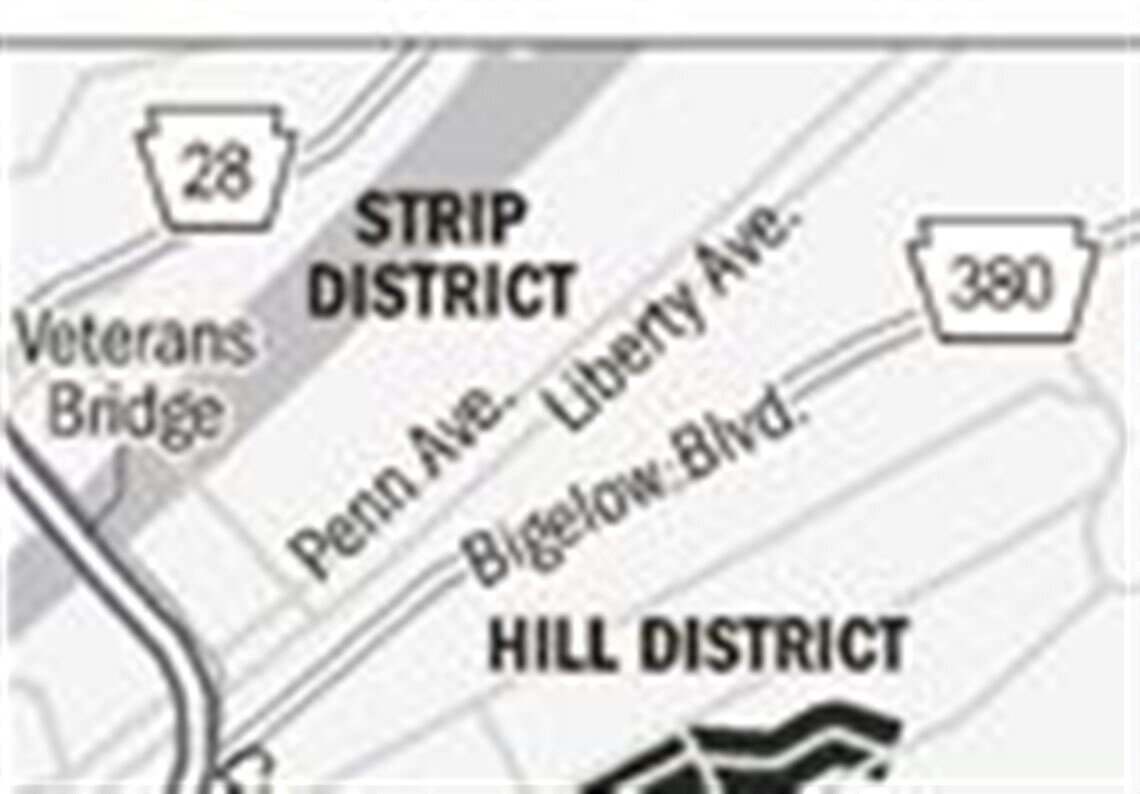Centre Avenue is a main corridor of the city, but it's the Hill District's spinal cord, an artery whose health the rest of the neighborhood depends on. It has a new Carnegie Library branch, YMCA, full-service supermarket and a rash of nearby housing construction and renovation.
The time is right, then, to bring forces together to plan best uses for empty spaces that remain, said Marimba Milliones, executive director of the Hill District Community Development Corp.
The neighborhood nonprofit this year initiated a collaboration with Carnegie Mellon University and the Design Center to begin planning how to fill them, using the master plan that residents and other stakeholders developed in 2011.
The area of focus extends from Crawford Avenue to Reed Street. A consultant is expected to be chosen soon to begin a public feedback process and complete viable plans that can be implemented.
"The key point is to envision Centre Avenue as a place" that reflects the history and authentic character of the neighborhood, not just a link between Downtown and Oakland, Ms. Milliones said.
"The progress we've made organically has been substantial, but it could have more impact if it is intentional," she said. "We have to create with great intention.
"This project is intended to show developers what we want and who we want to be. If they match us, that's the developer we want."
Carnegie Mellon architecture students, led by instructor Steve Quick, have been studying varieties of housing, including space where people can live above an office, shop or studio, with strategies for retail and destinations. The students will present their ideas in public sessions later in the summer.
"One thing Marimba asked us to look at is a variety of housing possibilities," notably small units and enclave designs that encourage social interaction and shared responsibility, Mr. Quick said.
His 10 architecture graduate students are enrolled in UDream, a five-week immersion program sponsored by the Remaking Cities Institute and supported by the Heinz Endowments to give minority students opportunities in architecture.
On a recent tour of neighborhoods with his students, Mr. Quick pointed out housing that was built to be affordable and desirable. Saint James Terrace and Roslyn Place, both in Shadyside, are charming and intimate enclaves with facing facades and shared, public spaces.
"Think about how you could do affordable housing in a charming way, to instill community literally by design," he told his students.
The tour included the new Fairfield Apartments in East Liberty and the 1960s-era East Liberty Gardens beside it; the South Side's Fox Way Commons and Chatham Village in Mount Washington.
"Affordable housing has a bad connotation, but some of the best development being done now is affordable housing," Mr. Quick said.
The students worked in five pairs to plan housing with ties to retail and cultural spaces. One group worked on a theme of replicating the Hill District's historic character.
"We walked around the neighborhood, and we went through historic images," said student Putu Dawkins, adding that the strength of the place is its social bonds.
"It's about the bonds that tie people to their past and present," said Ashley Cox, who worked on the authentic replication plan with Ms. Dawkins.
"It's been interesting for us as designers to consider buildings as vessels for social interaction," Mr. Quick said. "Architecture in support of social structure."
The Centre Avenue collaboration is the latest of the Hill District CDC's efforts to garner investment, which has included a $1.2 million stabilization of the New Granada Theater with help from Allegheny County and the Heinz Endowments.
It is completing a market study for a proposed development with the theater as an anchor: New Granada Square. It would include 50 housing units, 7,200 square feet of retail and 30,000 square feet for commercial, cultural and institutional use.
The CDC is working with current housing developers to land 100 prospective buyers in new homes and is incubating small businesses in its building on Centre Avenue.
"The neighborhood master plan clearly articulates what the Hill District wants to be, and city planning, the mayor's office, the housing authority, community organizations and residents all took part," Ms. Milliones said. "Now we need people who believe in that vision."

